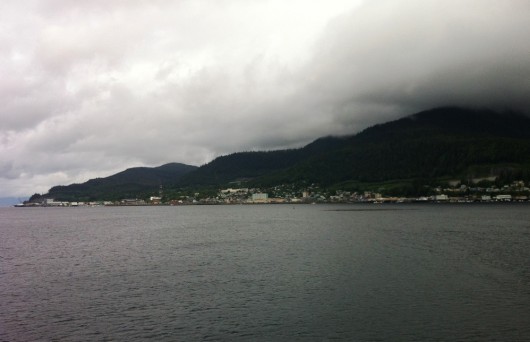The Ketchikan City Council spent a lot of time Thursday night talking about water rates. The point of contention was how to raise rates in a way that gets fish processors and other large, industrial water customers on the path toward paying a fair rate, and reducing the subsidy that residential customers currently provide.
Ketchikan’s city management recommended an across-the-board rate increase of 4 percent. That affects everyone, from individual residents to the largest fish processor. On top of that, though, management wanted processors to start paying a metered rate of 75 cents per thousand gallons.
That would generate about $179,000 more revenue for the water division, which has been operating at a deficit for many years.
Predictably, the fish processors weren’t happy with that suggestion. John Scoblic of Trident Seafoods reminded the Council that last year, it voted for an 8-percent rate increase across the board, and indicated it would continue with 8-percent increases the following two years.
“The 8-percent choice balances the budget by 2016,” he said. “The choice honors the working agreement that was made between the previous city council and the processors. The processors make choices too. Please don’t push us to make choices that will further exacerbate the city budget issues. All choices have consequences. Some choices result in unintended consequences.”
Paul Cyr of EC Phillips also spoke for the 8-percent increase. He said his company is working on a plan to reduce water use, but that will take time and money. Given that time, he said, “when you guys bring the metered rates on, we can better handle that, rather than just springing it on us like this.”
Council Member Bob Sivertsen led the rally to charge processors more. He argues that residential customers have been carrying too large of a burden for too long, and it’s time for the biggest users to start paying. He cited a water rate study conducted a few years ago for the city by an outside consultant.
“In that study was saying the processors should have gone up 400 percent, and the residential customers should have gone down, due to the service that was being provided,” he said.
On the other side of the argument was a strong reluctance to change the plan at the last minute, without adequate notice to processors that they might be paying significantly more. Here’s Council Member Judy Zenge, responding to Sivertsen’s arguments: “Bob, you sat at this same table as I did and agreed for a three-year increase. All I’m saying is that now, we seem to be changing that on people and it seems like we always do that. I think if we decide to do something, we should stick to it. That’s all I’m saying.”
Sivertsen proposed a metered rate for fish processors of 40 cents per thousand gallons, rather than the recommended 75. That failed.
Council Member Dave Kiffer then proposed a metered rate of 32 cents per thousand gallons on top of the base rate increase. That initially failed, but then it was brought back for reconsideration and passed, with Council Members Dick Coose and Matt Olsen voting no.
That motion basically provides processors with the 8 percent increase they had asked for, but through a metered system. Kiffer argued that it gets everyone used to the idea of metering for large industrial users, and the rates can be adjusted in the future.
Because of the changes made to the proposed water rate ordinance, City Manager Karl Amylon said he will bring a revised version back to the Council at its next meeting.
Also Thursday, the Council approved the 2015 city and Ketchikan Public Utilities budgets, marking the end of the annual budget process. The Council also agreed to add a tobacco tax as a discussion item for the city and borough’s Joint Cooperative Relations Committee.






